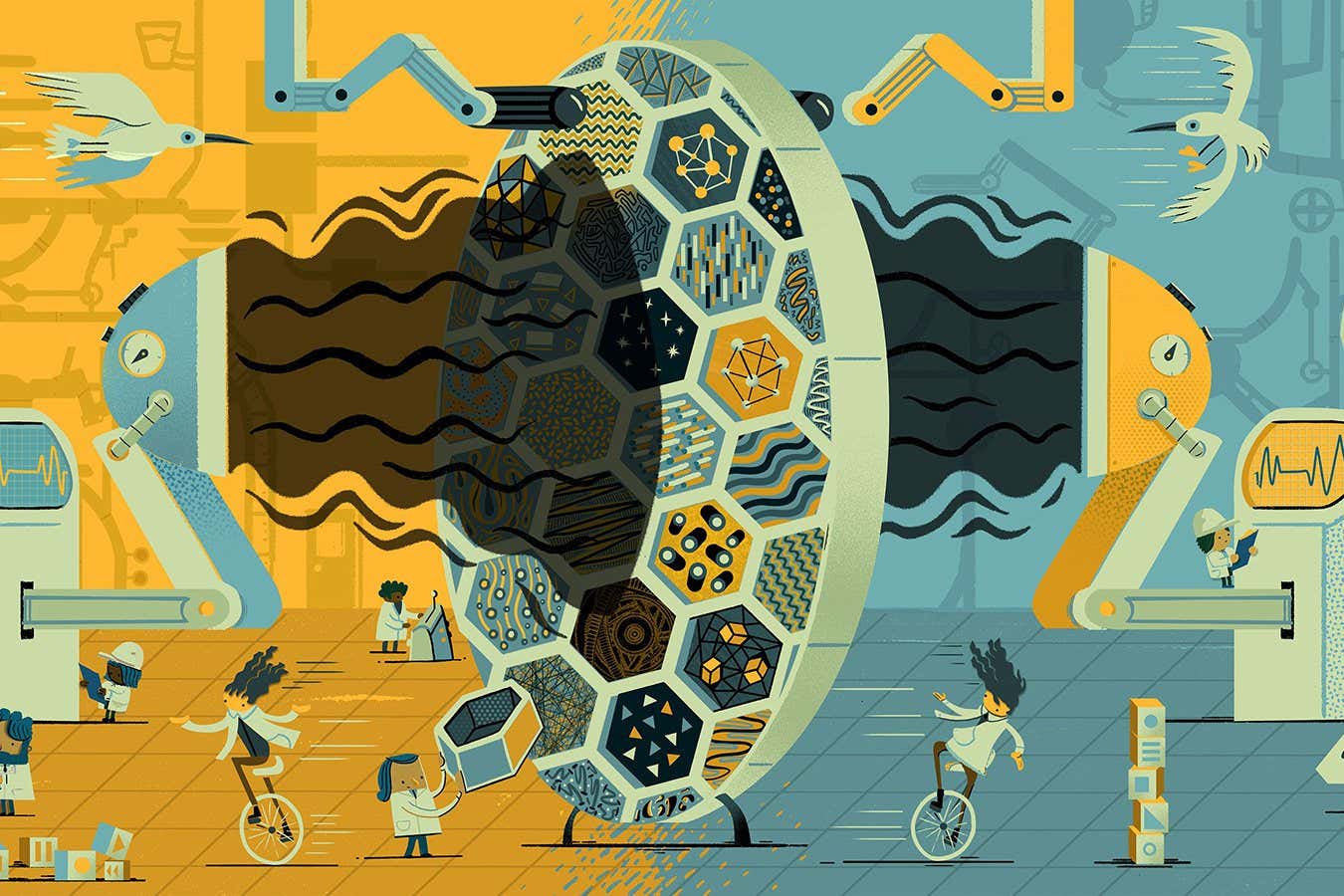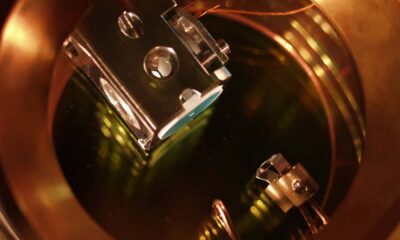My family moved recently. A change of address occasions much administrative work, one task of which was to calculate the value of the art collection my husband and I have cobbled together. Seems likely I was displacing some emotion — leaving our home of 14 years was not easy — but this exercise made me philosophical. I could enumerate the prices I had paid for various works; I could extrapolate about the current art market by checking recent auction results. But what did that tell me? The insurance company wanted to know about dollar amounts, but I was stuck on the thornier question of value.
Seven years ago, I saw a retrospective of the artist Agnes Martin, at New York’s Guggenheim Museum. I was familiar with Martin’s minimalist paintings, which I admired, and was unprepared to be surprised by the exhibition, let alone deeply moved. I love the experience of communion with films, books, canvases on the wall, but I am rarely overcome by it, and certainly did not expect to cry over an artist known for her cool geometries. But there we were, my companion and I, considering Martin’s final finished painting with tears in our eyes.
I’ve tried to make sense of my state on this day. I was hungry, or tired, or thirsty, or some combination of these — my diagnosis when dealing with my children’s emotional outbursts. Maybe Frank Lloyd Wright’s building had something to do with it, the pitch of the floor making me feel unsteady, the open rotunda making me feel dizzy. Or my response was purely emotional — I’d have to be made of stone to feel nothing after hearing the sobering facts of Martin’s life. Perhaps all this is true, or a factor, anyway, in my tears.
It’s also possible that I experienced something too rare in my secular life in our profane culture — call it the sacred. Already a cliché to say museums are modern cathedrals, built to dwarf the body and awe the senses; worth pointing out that quiet contemplation of anything that’s not my iPhone feels profound, and that the progress I made up the ramp of the Guggenheim was rather like the devout Catholic’s observation of the Stations of the Cross.
I think art is one of the last provinces of the sacred for me, maybe for most of us. A work of art’s price can’t tell us anything about it, and there’s no point in talking about art in terms of dollars or euro or yen, but perhaps there’s no other metric available to us.
The most expensive thing I’ve ever bought is a painting. It’s a small work, a minor effort by one of the world’s most celebrated artists. I bought it at auction, spending far more than I had intended to, caught up in the competitive fervour, my desire for this work somehow apart from what I would pay for it, by the magical thinking that governs most of my shopping. The way my insurance company judges this untitled painting’s worth is by referring to the record of what I spent on it. That’s the market in a nutshell; things are worth what someone is willing to pay.


When I look at this painting, I don’t think about that number. I think about what a genius can do with paint, and I think about this particular genius’s ability to make images that are at once horrific and beautiful, and I think about the hands of this particular genius touching this artefact that I now possess. But I’m not an underwriter.
This is the most expensive painting in our collection, but I don’t know if it follows that it is also the most valuable. I have a framed watercolour that my older son did when he was three — bless the Montessori teachers who wrote the date on it. It’s a splash of light blue and is, according to the artist, a whale. Children’s art rarely looks like what it’s meant to depict, but in this case, the thing, perhaps only accidentally, truly resembles a breaching whale. Obviously, there’s no way to convert sentimental value into actual currency.
It’s a great privilege that I’m in a position to spend any money on art, though I possess more sentiment than currency. It’s still possible to buy the work of artists at the start of their career, or editions by more well-known names at small auction houses, or even minor work by true masters.
I think about the money, because I’m working within the constraints of a budget, but only when I’m in the act of transaction. Then I forget that altogether. I cannot, as George Lucas did, spend $15mn on a painting by Robert Colescott. I could, though, spend about one month’s rent on a small, early work by the same artist. Living with it affords me a pleasure to which I cannot affix a price tag, even though my insurer has asked me to.
Sometimes a work of art is described as priceless. In my imagination this implies more zeroes than one can count, but it’s more accurate to say that with art, numbers aren’t salient. We should call a masterpiece unpriceable instead.
Still, money is so essential a factor of contemporary existence that we cannot help but bring it in. Money borders — even if it should not enter — some of life’s most serious provinces. Family life, religious faith and romantic love may be all that are left to us that are exempt from the logic of buying and selling.
The art market is one matter, but even the urge to photograph or otherwise document a museum visit, very common at the moment, is, I think, an economic activity. We reach for our phones from some insipid urge to participate in a culture too attuned to pointless connectivity, yes. But to Instagram a Pollock or a Van Gogh transforms that moment of pleasure into work. We think this ennobling; it’s sadly debased.
I don’t know whether it’s fair to consider faith a realm wholly uncorrupted by money — it’s certainly possible to enumerate the assets of, say, the Catholic Church (some of which are what we would call priceless). Nevertheless, art can provide an encounter with the mysterious, a territory that borders the mystical. Perhaps that is why I so often find it a balm.
Only a few months ago, on a day I found personally difficult, I fled to the Museum of Modern Art in need of distraction or solace. I saw an exhibition by the video and performance artist Joan Jonas. I spent a surprisingly long time watching black-and-white footage of a performance she’d staged decades ago, in the then-wasteland of lower Manhattan. In those minutes, I truly forgot the worries that had sent me to the museum in the first place.
Last summer, I pulled some strings and was invited behind the scenes at Christie’s Rockefeller Center outpost. I was writing a book in which one character, a billionaire, buys a painting by Helen Frankenthaler. (No deeper meaning in choosing this artist than the personal, as she’s one of my favourite abstract expressionists.) I wanted to see the rooms to which serious collectors are sometimes invited to kick the tyres of the masterpieces they might buy.
A Christie’s staffer led me down a long hall, threw open massive doors to intimate, soundless rooms, simply but strongly lit, containing nothing at all. I thought they felt like chapels. I loved imagining the Warhols and Picassos that had once stood there, ready for inspection.
My guide seemed surprised to discover that the last room we entered was not empty at all. In my recall, it, too, was bright and silent, but there, on the wall, was a painting. It sounds like something out of fiction but it’s true; it was by Frankenthaler. There are many words applicable: happenstance, coincidence, luck, kismet.
I find that when I’m immersed in the writing of a novel there will be uncanny resonances in my real life. I’ll be served a meal like one I imagined, or meet someone with the same name as a character I invented. There’s no deeper meaning in it, just a funny thing that has happened to me often enough that I understand it as part of the novel-writing process. Maybe this is part of the experience of seeing art, too. There’s some frisson that can’t be put into words, a sense of recognition or kinship.
I don’t know what happened to the Frankenthaler I saw that day. (Christie’s sold a Frankenthaler this spring for more than $4mn, but that’s a detail of interest mostly, I think, to insurance companies.) I like to imagine the person who bought it: that they went into the very room I did, that they smiled with some private pleasure at the thought of being alone with this painting. I like to imagine that they knew and cared about Frankenthaler, that they were tempted to touch the painting, that they had questions about its provenance, that they got close enough to the canvas to smell the paint itself.
I like to imagine that moment brought them joy, a joy they feel every time they glimpse the painting, wherever they’ve chosen to hang it. I cannot bear to think that it went into storage, or hangs in a guest bedroom in a rarely visited vacation home. I prefer to imagine it is with someone who would agree with me that art’s value is not calculable, albeit someone with enough money to say something like this and still be taken seriously. I’d like to tell that painting’s owner how I stole two minutes alone with their painting, and I like to imagine they’d know that is worth everything.
Rumaan Alam’s new novel ‘Entitlement’ is published by Bloomsbury
Find out about our latest stories first — follow FT Weekend on Instagram and X, and subscribe to our podcast Life & Art wherever you listen
















































































































































You must be logged in to post a comment Login